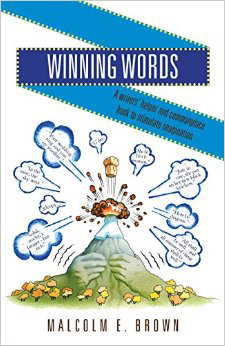My top tip for publication is to keep a writer’s notebook. I have kept them for over forty years and they are now helping to keep me.
What did I note in my writer’s notebook?
I noted in mine:
- striking turns of phrase including from the radio, TV, newspapers, books (e.g. quotations, novels, museum and art gallery captions to exhibits, web, dreams) and
- triumphs and accidents in my life.
I use perfect bound A6 books—but any form, including electronic, suffice. But always have some memory aid to hand e.g. pencil plus paper. Keep each notebook, especially when nearly full, safe. Writers afford their notebooks almost mystical power, as ethnographers do for their field notes.
Ethnographers share with writers, the stock-in-trade of the strange, making eyeballs bulge.
Writers’ notebooks have a flavour of scrapbooks, thesauri, miscellanies, blogs, Brewer’s Dictionary of Phrase and Fable, travelogues, vignettes or diaries—but are none of those. Each writer’s selection will differ. I would expect drawings in notebooks kept by artists or engineers. I am a (retired) pharmacist. Predictably, entries include drugs, sciences—and leeches. I am also a sociologist so include specialist notes on power, class, and status.
Another name for writers’ “notebooks” are “commonplace books.” They have a long history from 15th century England. John Milton and Francis Bacon were famed early recorders. Universities (e.g. Harvard) have used them as reflexive aids. My notebooks have helped me make sense of my life journey. For example, risks often pay off.
I selected entries bearing in mind:
- the 3 Ls of lust, loathing and lucre,
- religion, class, sex and mystery; remember the blueprint for arguably the shortest story:
“My God,” said the duchess, “I’m pregnant. Who did it?”
- “If it bleeds, let it lead” (a news media maxim) and
- the latest Google global zeitgeist: the top ten topics web searches. Those “free” data are gargantuan.
Above all, I included things that effected me, emotionally i.e. affected me. They made me laugh or cry. For example, amidst graduands receiving BAs after part-time study, many cried; they had sacrificed so much.
How can you use the entries?
I used entries in two ways:
1. Neat. For example, position two or three to varnish each thousand words of non-fiction. That has helped me avoid the waste basket; instead, I rose up to bite the editor on the nose. In an article about controversial organisational change, an editor thought my adaptation of the Irish blessing about splinters and sliding down a banister was so apt that he repeated it using a large typeface in a box.
2. Cocktail. I combine two or more entries to produce something new: guided serendipity. For example, 4,666 entries offer an astonishing 10,888,111 possible pairs of combinations. Enter your miscellaneous items: metaphorical grass cuttings, weeds, torn-up newspapers, potato peelings etc. into your mental compost heap. It transmogrifies, eventually, into a fragrant friable loam. This takes time. But your idea for your bestseller may emerge. It could be the successor to a certain young wizard.
 Here is the thing. An example best illustrates it. Brian Hanrahan, journalist, coined, “… I counted them all out and I counted them all back,” about Sea Harrier jets during the Falklands’ conflict. That balanced elegant sentence offered pleasing rhythm. But use immediately and others would condemn you as just a hack: a flagrant copyist lacking any originally.
Here is the thing. An example best illustrates it. Brian Hanrahan, journalist, coined, “… I counted them all out and I counted them all back,” about Sea Harrier jets during the Falklands’ conflict. That balanced elegant sentence offered pleasing rhythm. But use immediately and others would condemn you as just a hack: a flagrant copyist lacking any originally.

Malcolm E. Brown is the author of Winning Words: A writer’s helper and commonplace book to stimulate imagination. The 480+ page book offers about 5,000 entries, divided into categories valuable to writers. This offers “the best bits” of four decades of a writer’s notebooks. Other sources such as the Google global zeitgeist 2013 were also used. The result is 55 categories useful to writers (the author has special skill in such analysis). It is a modern-day “cabinet of curiosities” that can add fire to any writing!
Buy your copy at Amazon.com
But, wait a few years or decades and it again becomes shiny and new—especially if you combine it with something else from your notebook.
Plagiarism is using one source without acknowledgement. Others condemn that. However, combining two or more sources counts as scholarship. Remember that we can all only use the same words in the English language.
So I urge you to keep your writer’s notebook. It’s what writers do—and with good reason. If you lack one, I urge you to start one today.
About the author:
 Malcolm E. Brown is a bit of a polymath. He is natural and social scientist and retired pharmacist. He has worked in industry, public service and for himself. He has about a hundred publications from papers, articles and short stories to a novel. Check out his website on www.malcolmebrown.co.uk or LinkedIn page at uk.linkedin.com/pub/malcolm-brown/24/b75/b4b
Malcolm E. Brown is a bit of a polymath. He is natural and social scientist and retired pharmacist. He has worked in industry, public service and for himself. He has about a hundred publications from papers, articles and short stories to a novel. Check out his website on www.malcolmebrown.co.uk or LinkedIn page at uk.linkedin.com/pub/malcolm-brown/24/b75/b4b
Article © 2014 Malcolm E. Brown | Photo © Malcolm E. Brown



